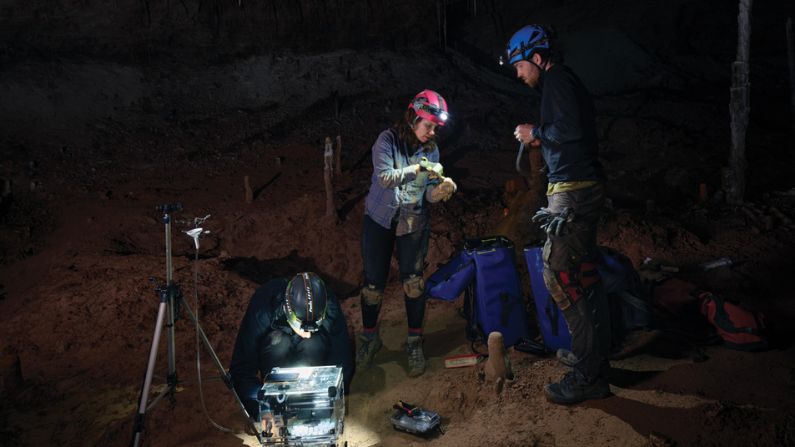Sometimes, crucial information comes from an unlikely source. The latest example: Formations in a Wyoming cave that are hundreds of thousands of years old—paired with data gathered from sediment in a neighboring lake—are helping scientists better understand the climate crisis.
Emily Benson, senior editor at High County News, wrote about the research for the magazine’s September edition in an article titled “How a Hidden Cave can Help Scientists Understand the Climate.”
For the article, Benson accompanied researchers to Titan Cave, east of Cody, Wyoming.
“What they [were] doing was collecting cave formations, speleothems, or you might call them stalagmites, from this particular cave,” Benson said. “And what you can do with those cave formations is, they’re kind of like tree rings, how you can look at tree rings and that can tell you something about the climate in the past, but tree ring records actually don’t go back that far, partly because wood rots and so there’s just not that long of a record. But cave formations can go back hundreds of thousands of years.”
The cave formations from Titan Cave have been dated to 400,000 years old, but Benson says the period of time that the researchers are interested in is about 125,000 years ago.
“That is a time called the last interglacial period,” Benson said. “And that’s the last time when the earth was probably a little bit hotter than it is right now, kind of near the low end of the estimates for the end of this century. So the idea is that researchers, if they understand a little bit more about the conditions of the earth during that time, that can help us understand a little bit more about some of the future conditions that we might see in the coming decades.”
In addition to studying cave formations, the researchers are looking at sediment from Bear Lake on the border of Utah and Idaho, close to Wyoming.
“They were collecting water samples to try to understand the chemical relationships between some of the tributaries to the lake and the lake itself,” Benson said. “And that helps them interpret the record of chemical signals that’s recorded in hundreds of thousands of years of lake sediment. [T]hat’s what they interpret to get these ideas of how the climate rainfall and temperature were changing in the past.”
Benson said looking at lake sediment along with cave formations can help scientists fully understand the paleo climate.
“Because they can be kind of a check and balance on each other, and you can say ‘Okay we’re seeing this change in the lake sediment, do we see a similar change in some of these cave formations?’ And that can give the scientists more confidence in what they’re seeing,” she said.
You can read Benson’s article in the September edition of High Country News.
That story was shared with us via Rocky Mountain Community Radio, a network of public media stations in Colorado, Wyoming, Utah and New Mexico that includes KHOL.






